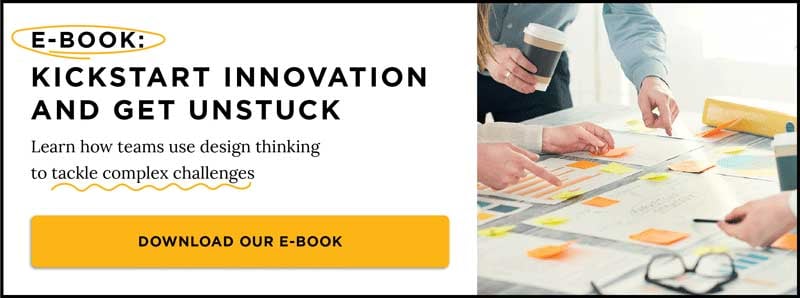If you have gotten to this blog than you are could be well on your way to becoming an agile organization. The seventh and capstone step in this journey is achieving technical excellence.
Achieving technical excellence is all about consistently integrating the first six steps with a well-defined set of technical craftsmanship practices. Technical excellence is rooted in looking for opportunities to be more collaborative, iterative, and systematic when making decisions to reduce the time and money spent going in the wrong direction, and determining the right direction more quickly and more effectively. Herein lies the gap; when people refer to agile transformations and agile organizations, they often have in mind only the technical craftsmanship practices and routines in isolation and typically with a focus only on IT.
Unlike the other steps in the agile transformation process, which typically occur in a relatively sequential pattern, this final dimension of the agile transformation touches all of the others, and can be applied in conjunction with each of the previous six steps.
Most organizations have put a lot of thought and energy into achieving technical excellence with technical craftsmanship practices and routines in their IT departments. They struggle to find the right programmers and to build collaborative teams that can tackle any technical challenge while constantly evolving their skill sets to stay relevant. But technical excellence isn’t only necessary in the tech department. Collaborative routines add value across the entire organizational enterprise.
One of the most important pieces of technical excellence is incorporating feedback loops through collaborative routines. These routines occur at various levels in an initiative portfolio, to ensure all stakeholders’ needs and opinions are factored into decision-making in a timely manner, and that risks are identified and dealt with promptly.
A common instance we often point to is gathering feedback from legal and compliance teams at the outset of an initiative, even when a lot of the details have not yet been fully elaborated. Their involvement may seem unnecessary at this point, but they do play a vital role in identifying design needs – and overarching risks – that could help prevent the initiative from floundering. For example, the IT team may not be familiar with the new General Data Protection Regulations (GDPR) that set strict data protection and privacy rules for any data collected from EU residents or businesses. This regulation can affect what information a platform is allowed to ask for, how data is stored, and who can access those databases – but without technical knowledge of the particular regulation, IT teams may innocently build an app or platform that breaks some or all of these rules, putting the company at significant risk.
Similar instances can be drawn from other functional disciplines across an organization.
For every initiative and instance, integrating an effective set of stakeholders into each feedback loop, at the right point in time and with the appropriate awareness of relevant details or essential ambiguity, is the essence of an agile organization.
Beyond IT
Many companies assure their IT teams are well-versed in how to be agile. Indeed the concept of agile emerged from agile software development, which relies on a design thinking-esque approach to initiatives that includes lots of feedback, collaborations and iterative execution steps that produce the working pieces of a solution. Agility in IT also benefits from a number of prescriptive technical practices originally drawn from the constructs of Extreme Programming. However, most IT teams limit the resulting agility locally, to their own isolated environment. They may work seamlessly together with other developers and their corresponding product leaders, but ask them to integrate additional external leadership stakeholders and process steps into their operation and their system can seem to quickly fall apart.
The only way to be truly agile outside of the core IT team is to spread the agile behavior set to the rest of the organization, and to break down silos that prevent disparate teams from operating effectively together, as they organize around what become shared objectives and outcomes.
It’s not an easy process. The agile methods that work for IT don’t copy readily to other departments, and outside of IT, most employees have little understanding of what agile is and how it works for them. That’s why this step cannot simply be deployed on its own.
Remember, the agile transformation process is a journey that comes with many obstacles. But organizations that are committed to making real changes and building their technical excellence with every initiative will witness how these efforts can result in better, faster more collaborative outcomes that deliver meaningful business results.
Becoming an agile organization takes time and commitment, and it can ensure that your organization is able to adapt to whatever the future has to offer.
Don’t miss the rest of this series on the agile transformation process.
Learn how to enable innovation skill-building at scale here or download our free ebook Kickstart Innovation: A Guide for Organizations.
Andy Czuchry Jr, PhD is a proven business transformation leader with extensive experience driving strategic and operational transformations that significantly increase business-value outcomes for mission-critical objectives. Over the past 10 years of his 25+ year career in business and technology innovation, Andy has led nearly a dozen organizational transformations in national and global organizations spanning across all disciplines, both within and beyond the traditional agile core.
Andy earned Ph.D. and Master’s degrees in Information and Computer Science (Artificial Intelligence, with a minor in physiological psychology) from the Georgia Institute of Technology. He earned his bachelor’s degree from Dartmouth College in Computer Science and Mathematics with a focus in applied algorithm development. Andy maintains numerous certifications in the domains of Agility, Lean Six Sigma, and Program Management. He is the holder of two patents issued by the US Patent Office, as well as a recognized global leader with 20+ peer-reviewed papers published in elite business and technology journals and conferences.
